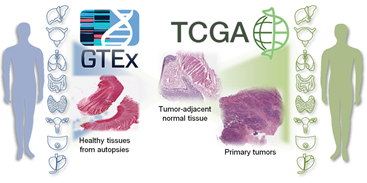2019-05-05 by Quick Biology Inc.
The biomarker is vital for disease diagnosis and prognosis (Figure 1). One “biomarker” can be a protein, a metabolite, an RNA molecule or even a DNA mutation. Genomics is transforming every area of life science, next-generation sequencing (NGS) is a high-throughput genome sequencing technology, have now become mainstream in biomarker discovery. One vivid example is that researchers have peered into cancers, using RNA-seq, ChIP-seq, or exome sequencing in search of any molecular signatures associated with cancer. The Cancer Genome Atlas (TCGA), a landmark cancer genomics program by NCI (National Cancer Institute) and NHGRI (National Human Genome Research Institute) since 2006, molecularly characterized over 20,000 primary cancer and matched normal samples spanning 33 cancer types. Together with Genotype-Tissue Expression (GTEx) project, a comprehensive public resource to study tissue-specific gene expression and regulation of 53 non-diseased tissue sites across nearly 1000 individuals, these NGS data resources have already led to improvements in our ability to biomarker discovery (Figure 2).
Figure 1: Role of a Biomarker (image source: netrf.org)

Figure 2: Integrating GTEx and TCGA for biomarker discovery (adopted from the web, Credit: Dvir Aran)

Are you ready to sequence your samples of interest? Find More at Quick Biology.
See resource:
TCGA: https://www.cancer.gov/about-nci/organization/ccg/research/structural-genomics/tcga
GTEx: https://gtexportal.org/home/
